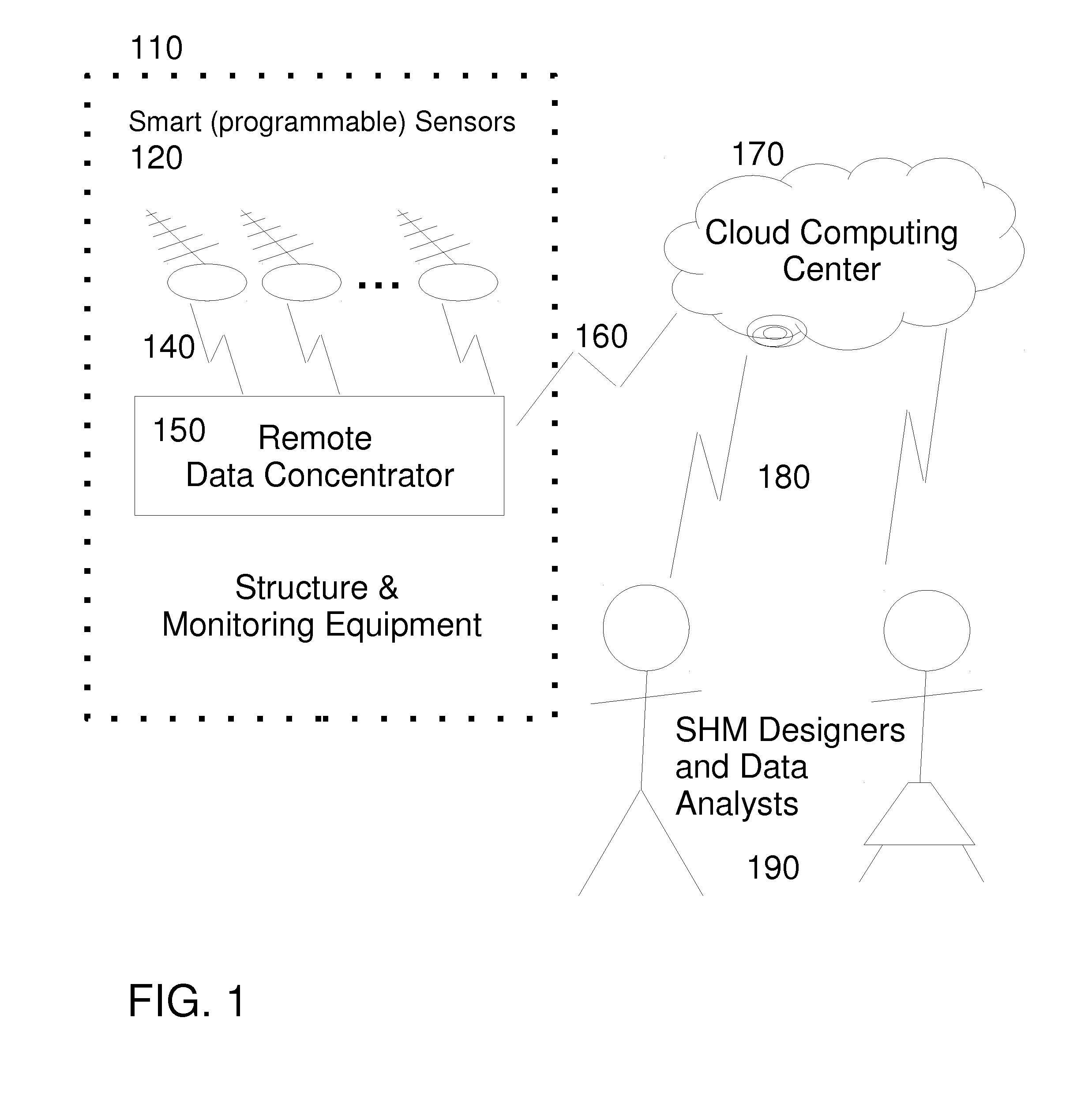Software to facilitate design, data flow management, data analysis and decision support in structural health monitoring systems
a technology of structural health monitoring and software, applied in the direction of instruments, biological models, computing models, etc., can solve the problems of no design monitoring system we know, and achieve the effects of improving the productivity of human activities, improving monitoring and control, and increasing the rate of growth in use of those technologies
- Summary
- Abstract
- Description
- Claims
- Application Information
AI Technical Summary
Benefits of technology
Problems solved by technology
Method used
Image
Examples
Embodiment Construction
1. Distributed Processing
[0134]With smart sensors 110 and / or a remote data concentrator 150, computations can be performed at various places such the smart sensors, the data concentrator(s) and / or the primary (possibly cloud) data center 170. FIG. 1 shows only one data concentration stage, but of course the idea could be easily extended to multiple data concentration stages by one skilled in the art.
[0135]A general rule is to push as much of the computations as feasible as close to the data collection site / physical sensors as feasible. This follows, because data communications often dominate the power requirements at remote locations, especially since the power consumed by many sensors is quite low. The modern microprocessors used in many smart sensors consume relatively little power for computations. This encourages users of smart and wireless sensors to do much of their computations at the sensor node and only transmit terse summaries to a data concentrator at a relatively low fre...
PUM
 Login to View More
Login to View More Abstract
Description
Claims
Application Information
 Login to View More
Login to View More - R&D
- Intellectual Property
- Life Sciences
- Materials
- Tech Scout
- Unparalleled Data Quality
- Higher Quality Content
- 60% Fewer Hallucinations
Browse by: Latest US Patents, China's latest patents, Technical Efficacy Thesaurus, Application Domain, Technology Topic, Popular Technical Reports.
© 2025 PatSnap. All rights reserved.Legal|Privacy policy|Modern Slavery Act Transparency Statement|Sitemap|About US| Contact US: help@patsnap.com



